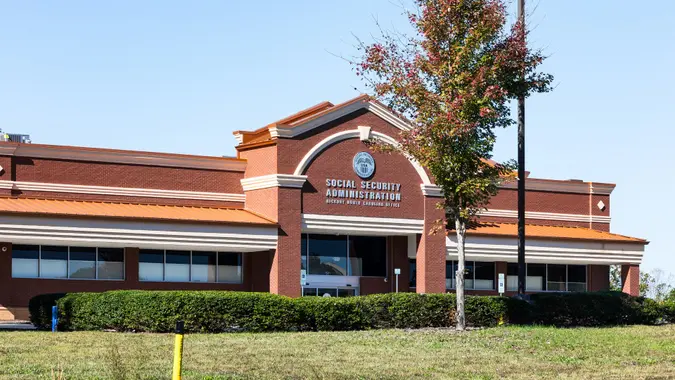Saving $100 a Month? You’ll Be $1.1M Short of a Comfortable Retirement — 5 Things You Can Do

Commitment to Our Readers
GOBankingRates' editorial team is committed to bringing you unbiased reviews and information. We use data-driven methodologies to evaluate financial products and services - our reviews and ratings are not influenced by advertisers. You can read more about our editorial guidelines and our products and services review methodology.

20 Years
Helping You Live Richer

Reviewed
by Experts

Trusted by
Millions of Readers
Saving $100 a month might feel like a comfortable way to build a nest egg, but is it enough for retirement? With rising costs, longer retirements and stagnant savings yields, that $100 won’t necessarily stretch far when it matters most.
Why $100 a Month Isn’t Enough
A study from RealWorldInvestor.com looked at how wide the gap really is. Someone with $8,000 in savings (the median U.S. bank balance according to according to the latest Survey of Consumer Finances data) who adds $100 each month will end up with just $57,629.53 after 20 years, assuming a 4.4% annual return.
That’s against a retirement target of $1.25 million, the amount needed to cover 25 years of expenses at $50,000 a year. The shortfall? A massive $1,192,370.47. Even bumping contributions to $500 per month still leaves the final balance at just $211,122.92, a long way from financial freedom.
Here are six strategies that can make a meaningful difference over time.
Look for Easy Expenses To Cut
Some expenses, like unused subscriptions or overpriced delivery habits, are an obvious place to start when it comes to adding to monthly savings. Being able to redirect even $50 to $100 a month into savings can be an immediate win and doesn’t have to be too painful.
Increase Contributions Early and Often
Waiting for a raise or a milestone to start saving more is a luxury most can’t afford. Even a $25 increase now beats a $100 increase five years from now. Whether boosting automatic payroll deductions or increasing personal retirement account contributions, it’s important to revisit savings annually and raise the amount steadily.
Use the Right Type of Accounts
Tax-advantaged accounts like 401(k)s, Roth IRAs and traditional IRAs offer valuable benefits in the run-up to retirement. Pre-tax growth, compound interest and employer matching can help retirement savings grow faster, with the average 401(k) match in 2025 between 4% and 6% of compensation, according to Vanguard.
Invest With a Long-Term Lens
Holding everything in cash may feel safe, but it often falls short of keeping up with inflation. Compound growth requires time and some risk tolerance. Building a diversified portfolio focused on long-term growth is one of the most effective ways to help savings grow enough to meet real retirement goals.
Push Back Retirement by a Few Years
While it might not be a popular choice, delaying retirement even by a few years can make a meaningful difference. It gives investments more time to grow, adds more contributions and shortens the number of years savings need to last.
 Written by
Written by  Edited by
Edited by 

























